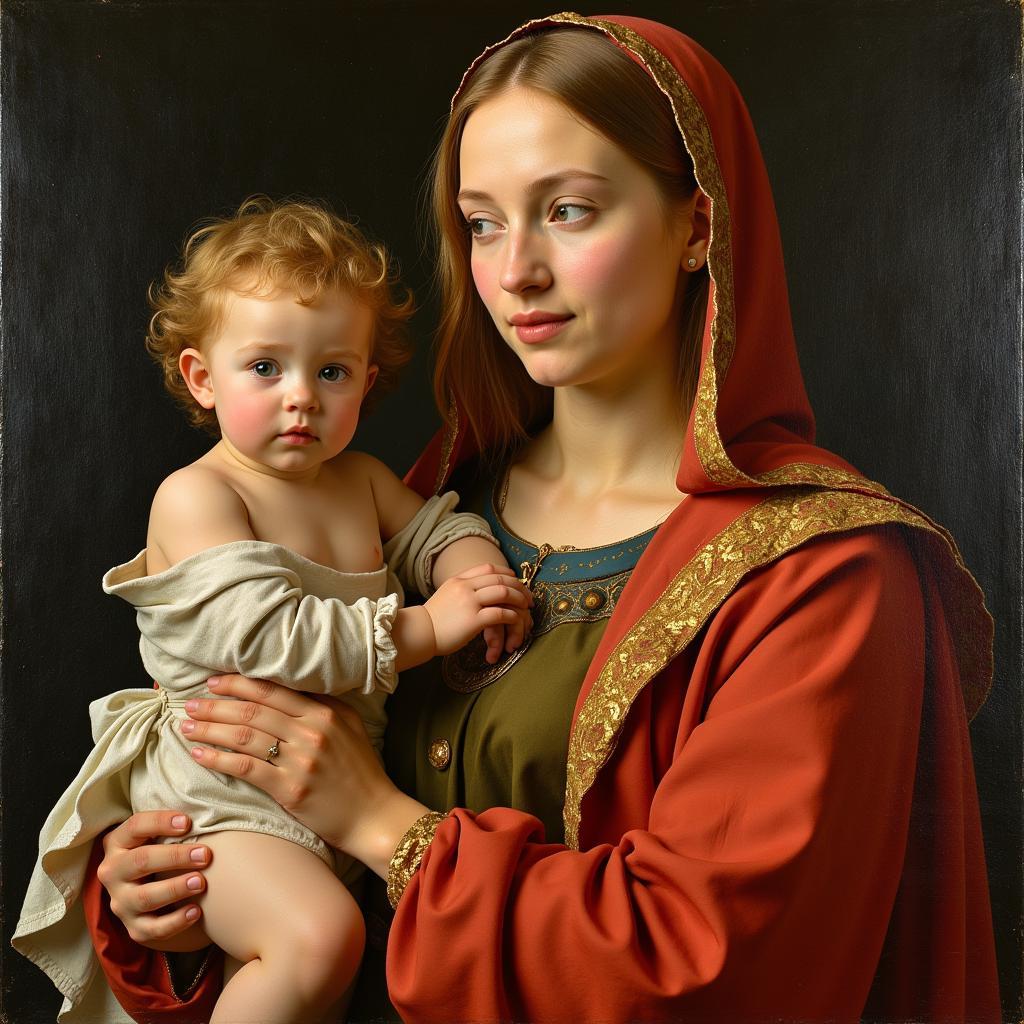Paintings of Jesus have captivated hearts and minds for centuries, offering glimpses into the divine as envisioned by artists across time. From iconic representations to unique interpretations, these masterpieces provide insights into artistic movements, cultural contexts, and the enduring power of faith.
 Famous painting of Jesus
Famous painting of Jesus
The Enduring Appeal of Jesus in Art
The image of Jesus has been a central theme in Western art since the early days of Christianity. His life, teachings, and sacrifice have inspired countless artists, each offering their own interpretations of his likeness and message. These depictions have served not just as religious icons but also as powerful tools for storytelling, emotional expression, and cultural commentary.
 Renaissance painting of Jesus
Renaissance painting of Jesus
A Journey Through Time: Evolution of Jesus’ Portrayal
From the Byzantine era’s stylized icons to the Renaissance’s pursuit of realism, artistic renderings of Jesus have evolved alongside changing artistic sensibilities. The early centuries saw a focus on his divine nature, often depicted as a majestic ruler. As the Renaissance dawned, artists like Leonardo da Vinci and Michelangelo sought to portray a more human and relatable Jesus, emphasizing his compassion and suffering. This shift towards naturalism continued into the Baroque period, with artists like Caravaggio employing dramatic lighting and emotional intensity.
Beyond the Canvas: Symbolism and Interpretation
 Symbolism in paintings of Jesus
Symbolism in paintings of Jesus
To truly appreciate paintings of Jesus, one must delve into the rich symbolism embedded within. The halo, often seen encircling his head, represents holiness and divine light. The use of colors holds significance, with gold symbolizing divinity, red signifying his sacrifice, and blue representing heaven. Hand gestures, such as the raised hand in blessing or the open palm, convey specific meanings. By understanding these symbols, viewers can uncover deeper layers of meaning and engage with the artist’s intended message.
Famous Paintings of Jesus: A Glimpse into Masterpieces
Countless artists have immortalized Jesus on canvas, but some works have achieved iconic status:
-
Leonardo da Vinci’s “The Last Supper”: This masterpiece captures the drama and emotion of Jesus’ final meal with his disciples. Da Vinci’s masterful use of perspective and composition draws the viewer into the heart of the scene.
-
Michelangelo’s “The Last Judgment”: A monumental fresco adorning the Sistine Chapel, this work depicts Jesus as a powerful judge at the end of time, surrounded by saints and sinners.
-
Caravaggio’s “The Entombment of Christ”: Known for his dramatic use of light and shadow, Caravaggio portrays the somber moment of Jesus’ burial with stark realism and emotional intensity.
-
Rembrandt van Rijn’s “The Return of the Prodigal Son”: This poignant painting captures the theme of forgiveness and redemption as Jesus welcomes back his wayward son.
These are just a few examples of the countless paintings that have shaped our understanding and appreciation of Jesus throughout history. Each masterpiece offers a unique perspective, inviting us to contemplate his life, teachings, and enduring legacy.